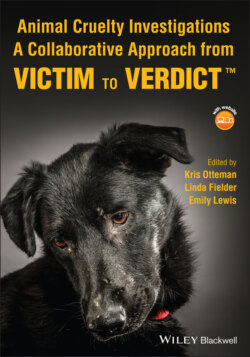Читать книгу Animal Cruelty Investigations - Группа авторов - Страница 185
6.9.2 Animal Abuse
ОглавлениеLaws may include language that describes an individual's mental state, such as “intentionally,” “recklessly,” or “knowingly” with regard to causing harm to an animal (Figure 6.4). The veterinarian's examination of evidence and knowledge can help the investigator determine whether the injury to the animal was intentional or accidental. Veterinarians understand the force required to break a dog's femur, for example, and can provide an opinion as to how the injury occurred. Degree of injury and the animal's ability to recover are also part of the veterinarian's assessment. In a case of aggravated animal abuse, the charge may stand if the animal is killed or permanently injured but be a lesser charge if the animal can fully recover from the incident.
Figure 6.3 Evaluating overall animal husbandry and access to veterinary care is a key responsibility of the veterinarian in matters of potential animal neglect.
Source: Oregon Humane Society.
Figure 6.4 Veterinarians assist in ruling in or out the reported causes of injury or illness by answering the question as to whether or not the “story” aligns with the findings.
Source: Oregon Humane Society.
